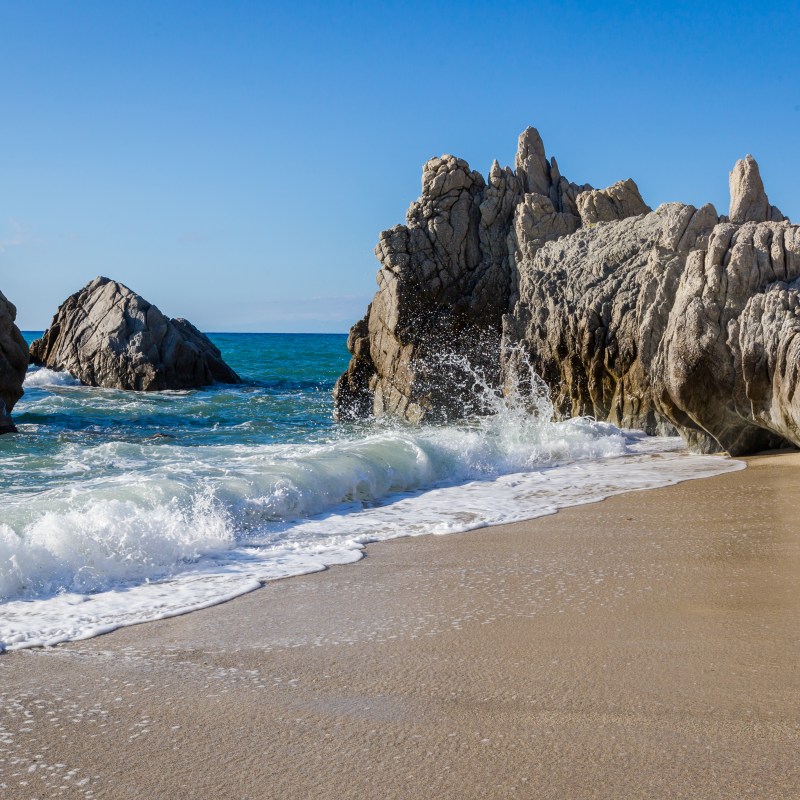
I’ve said it before, and I’ll say it again—Italy isn’t just a bucket-list destination. It’s a country that’s chock-full of unmissable sites.
Videos by TravelAwaits
But some of them go quietly under the radar.
Off the top of my head, cities like Trieste and islands like Sardinia (and even Sicily) don’t get enough attention. They showcase a side of Italy that you won’t see in major regions like Tuscany, Lombardy, and Lazio.
And then there are the truly lesser-known destinations.
When you picture Italian coastlines worth drooling over, what comes to mind?
Probably Cinque Terre, along with the Amalfi Coast, two of Italy’s premier seaside stretches.
But what about the ‘boot’ of Italy? Puglia and Calabria are the heel and toe of the boot, respectively. They’re some of the country’s least populated regions where you won’t find large metropolises blanketed in historic monuments and Renaissance architecture.
But you will find the Coast of the Gods, also known as Costa degli Dei. It lines a large swatch of Calabria’s unspoiled coastline on the very tip of the Italian (geographic) boot. If you’ve never heard of it, consider this your sign to get off Italy’s tourist track and out into the wild.
8 reasons to visit Italy’s Coast of the Gods, aka Costa degli Dei
Its 55km of mind-blowing Tyrrhenian Coast

The Mediterranean Sea is home to tons of micro-seas, and the Tyrrhenian Sea is one of the brightest and clearest of the bunch. The water is bright blue, almost like cotton candy.
The beaches have soft, white sand, while other parts of the coast are rugged and rocky. It’s also one of the greener parts of the country.
I could keep going on, expounding on the gorgeous sites that await you along this 55km or 35-mile stretch, but I think it’s easy to get. This is called the Coast of the Gods because should any heavenly deities visit earth, they’re probably going to camp out where the seaside views are endlessly vibrant.
The beaches will blow your mind
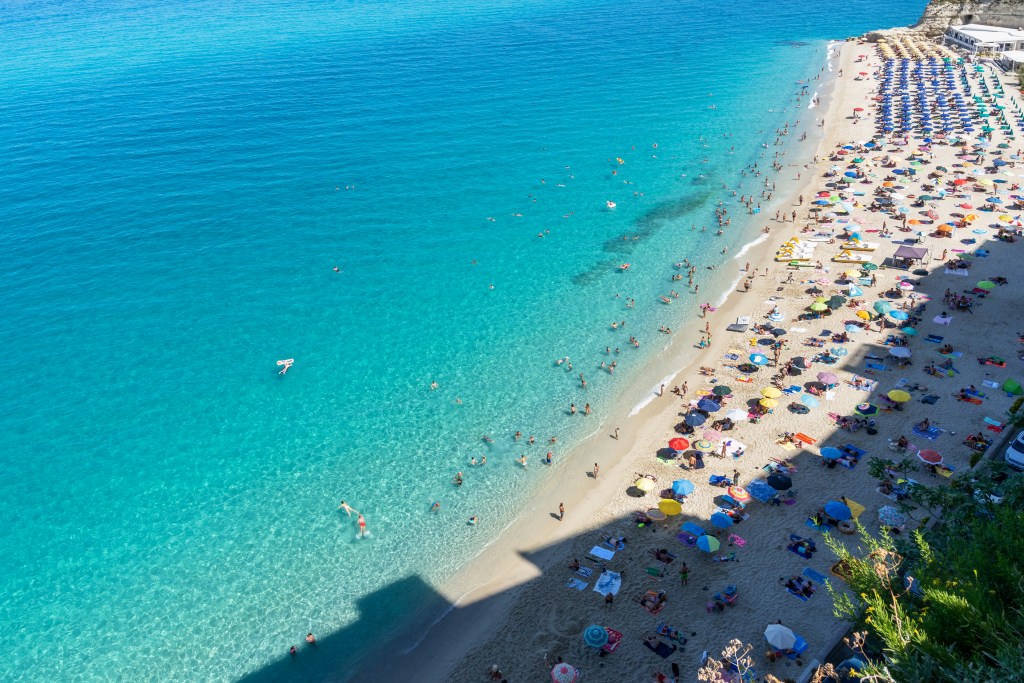
Coastal views should be top of mind when you visit the Mediterranean, but let’s zero in on Coast of the Gods’ best beaches.
Tropea Beach is the most famous in the region thanks to its golden sand and bright water. Overlooking the beach is the town of Tropea, built on a dramatic cliffside with a gorgeous, historic monastery perched right at the top.
(Want to let a guide handle your visit? Go with a private tour via GetYourGuide.)
Capo Vaticano is another top beach thanks to its clear waters and, once again, dramatic cliff views. The area is ideal for casual snorkeling and diving, as there’s plenty of marine vegetation and life.
Lastly, Paradise del Sub near Zambrone is another stunning beach that locals and tourists love. It’s also one of the easiest to get to, as public transportation takes you right to the beach.
You can get out on the water easily on the Coast of the Gods
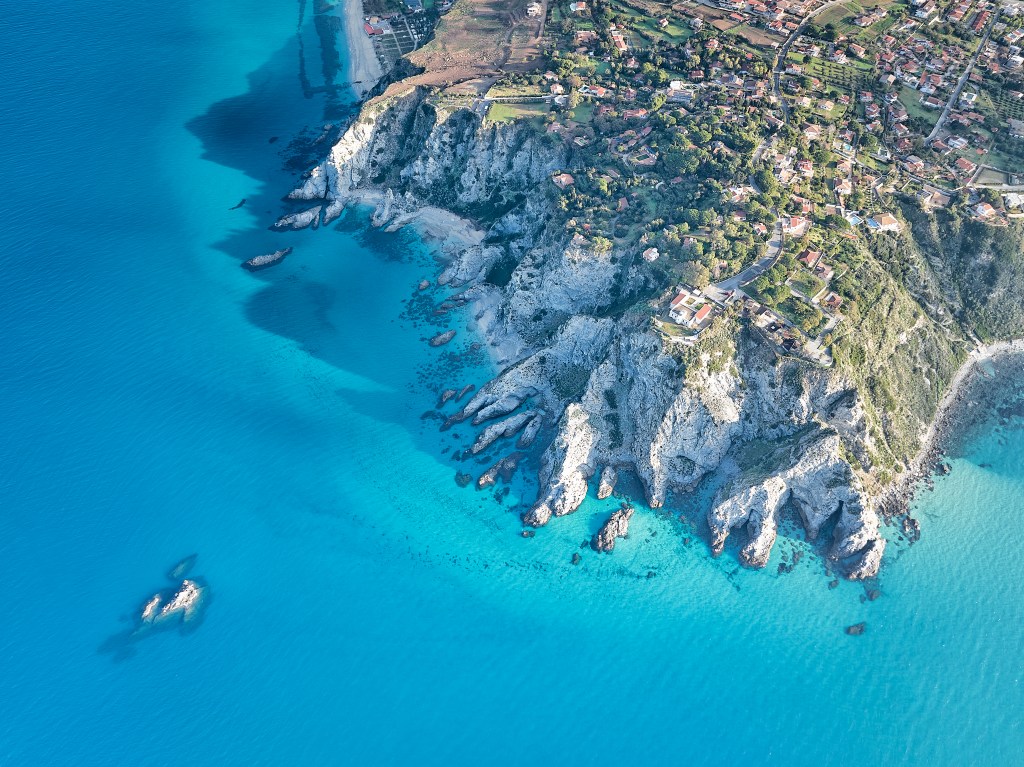
Italy is renowned for its beaches… but it’s not the most outdoorsy country. While you can find stunning coastlines pretty easily, it’s not always easy to actually get out on the water. In Calabria’s Coast of the Gods, you can easily take to the surf however you see fit.
Tropea is the largest hub in the Coast of Gods. You can easily book kayaking tours or even a day trip via boat from the marina. Snorkeling is also available.
Uniquely, boating excursions can also take you to hidden coves and beaches that aren’t accessible by road or foot. For example, Groticelle Beach is a popular spot that you can only reach by boat, nearby Capo Vaticano.
As mentioned above, it’s easy to book a boat tour with GetYourGuide, TripAdvisor, and Viator.
There are nine quaint villages to explore
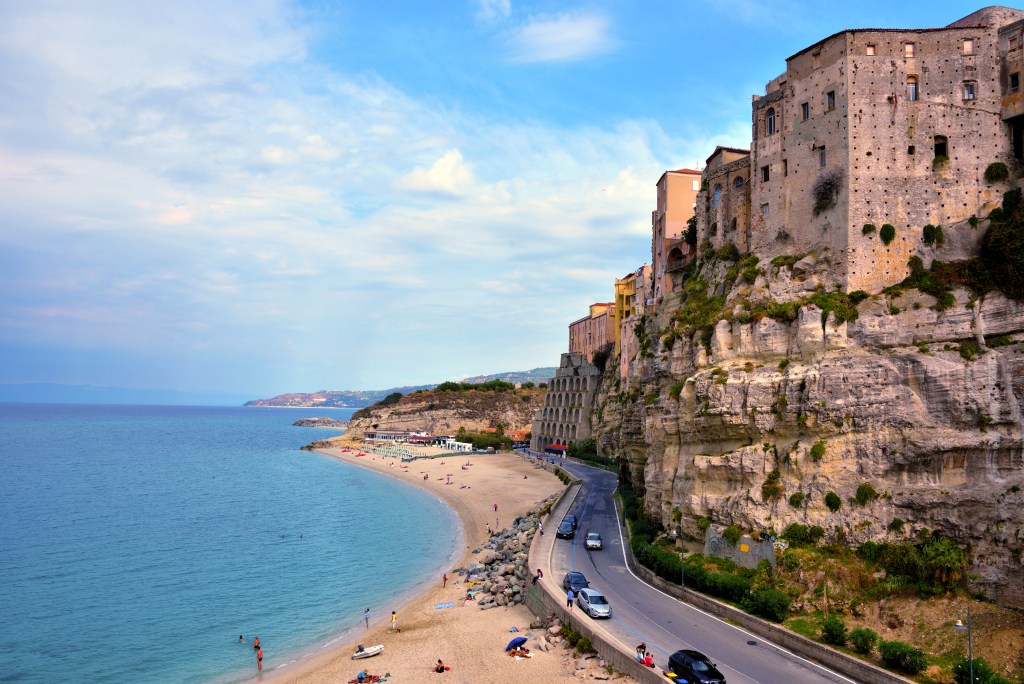
If you’re renting a car, you can drive up and down the coast to explore all nine seaside villages on the Coast of the Gods. It begins with Pizzo in the north, then Vibo Valentia, Briatico, Zanbrone, Parghelia, Tropea, Ricadi, Joppolo, and ends with Nicotera.
Vibo Valentina is the capital of Calabria, making it the largest and most populous of the towns. Most of these areas are home to a few thousand people, meaning they have small and walkable main squares. Tropea, as mentioned above, has one of the most accessible beaches on the list.
Calabria’s Coast of the Gods has famous dishes you won’t find elsewhere in Italy
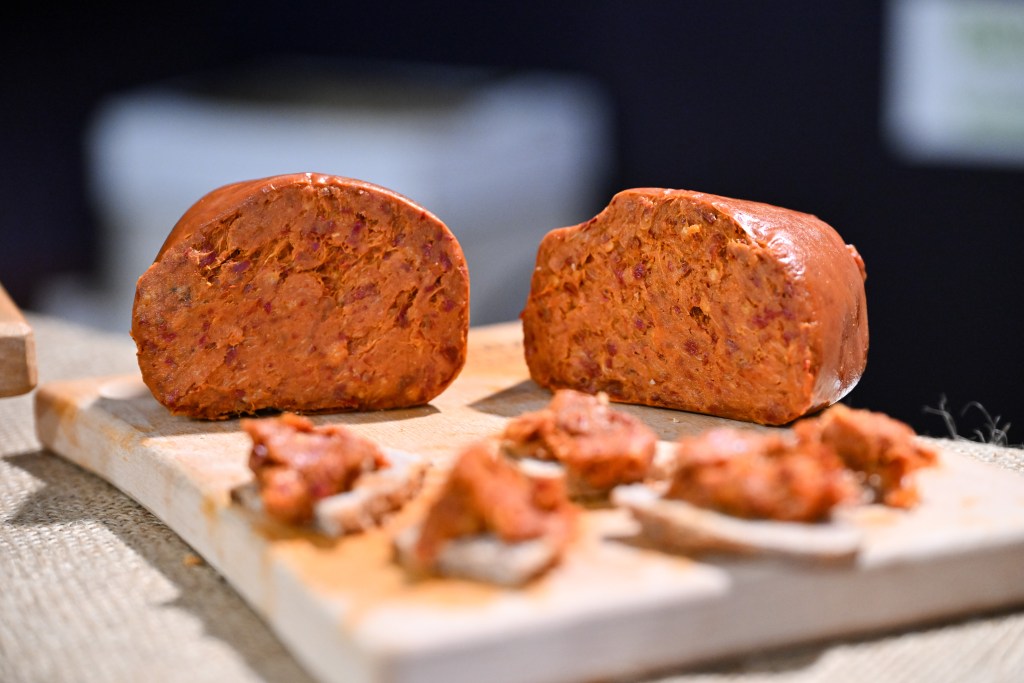
Calabria doesn’t get nearly as much attention as Tuscany, Lazio, Emilia-Romagna, or Veneto, which are home to Italy’s most famous cities. One of the best reasons to visit Calabria isn’t just to lounge on its beaches—its to take a bite out of a lesser-known series of Italian specialties.
‘Nduja is the most famous on the list. It’s a spreadable spicy salami that’s usually eaten on bread or with pasta. Then there are the Tropea onions, which are sweet, aromatic red onions that end up in many, many Calabrian dishes. Personally, I’m dying to try out the ravioli alla calabrese, which are cheese and salami-filled ravioli with a spicy tomato sauce.
It’s not on the main tourist path
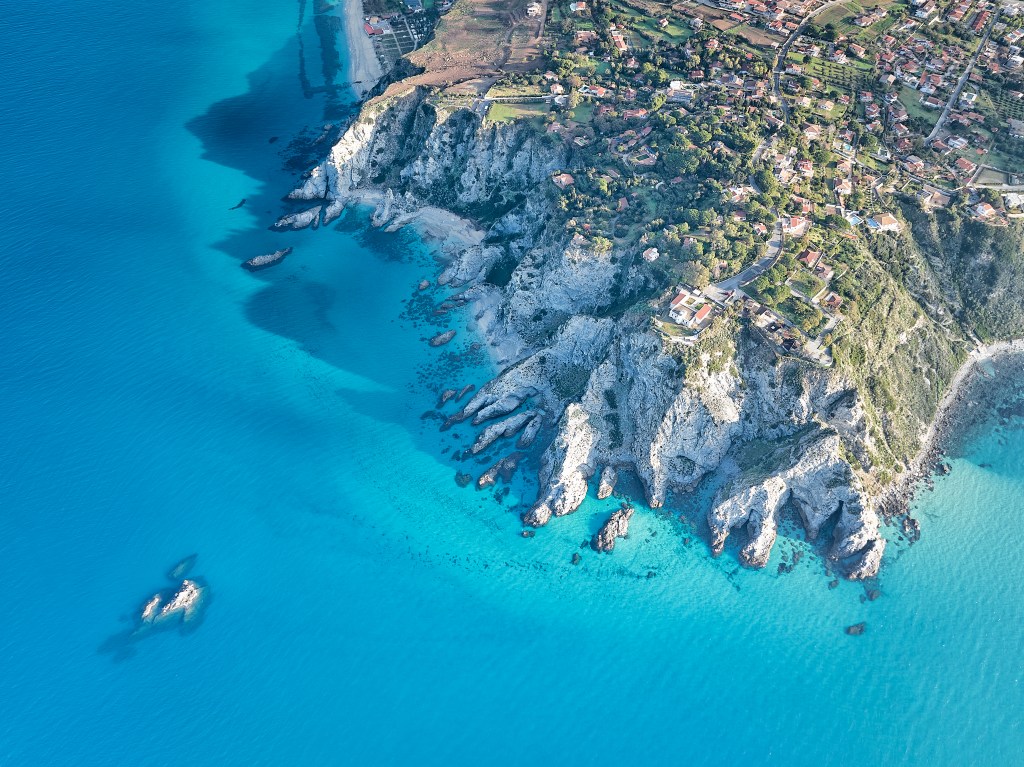
You’ve probably pieced this together by now, but one huge reason to head south to Calabria’s Coast of the Gods is to skip out on the hordes and hordes of tourists. That’s doubly true in 2025 as the Vatican jubilee continues to attract tens of millions of pilgrims in addition to tourists.
But lets not forget what fewer tourists means: lower prices and better experiences. Want to visit Italy and not go bankrupt? Head to the Coast of the Gods.
Want to explore a part of Italy where locals aren’t burnt out on visitors? Straight to the Coast of the Gods.
Want to show your family photos and talk about experiences they haven’t heard of before? Coast. Of. The. Gods.
The best sunsets in Europe are on the Coast of the Gods
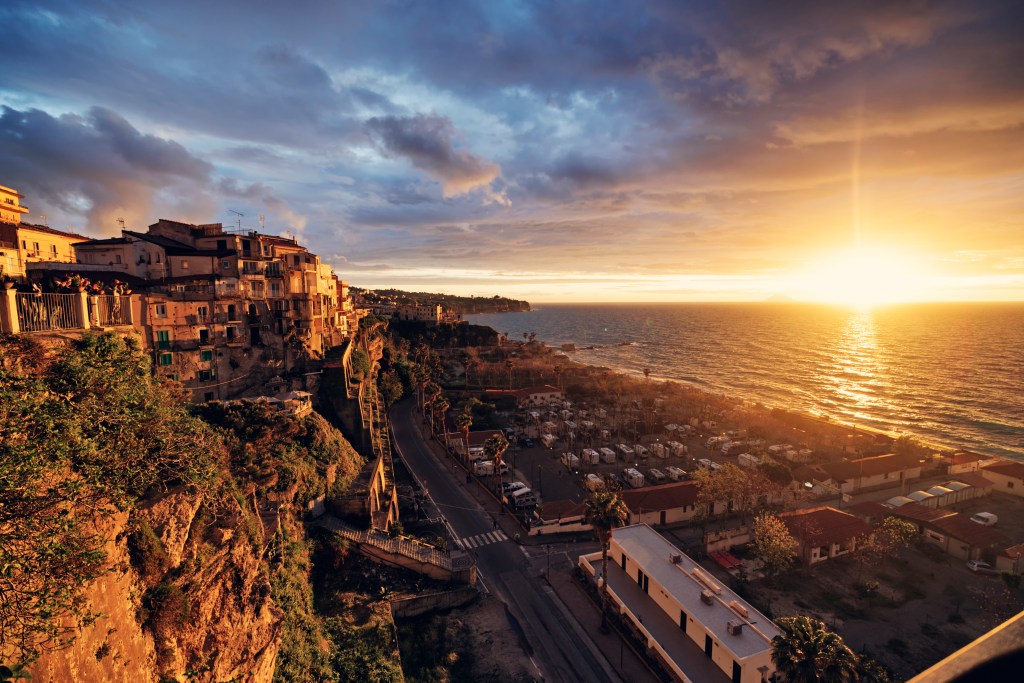
The toe of Italy’s geographic boot is one of the westernmost points on the mainland. That means one thing: unmatched sunsets. Whether you want to curl up on the rocks and watch with a loved one or head out to sea to chase down the sunset on a catamaran, the Coast of the Gods gives you a West Coast-caliber front row seat to the light show.
Ancient history will take you into new territory
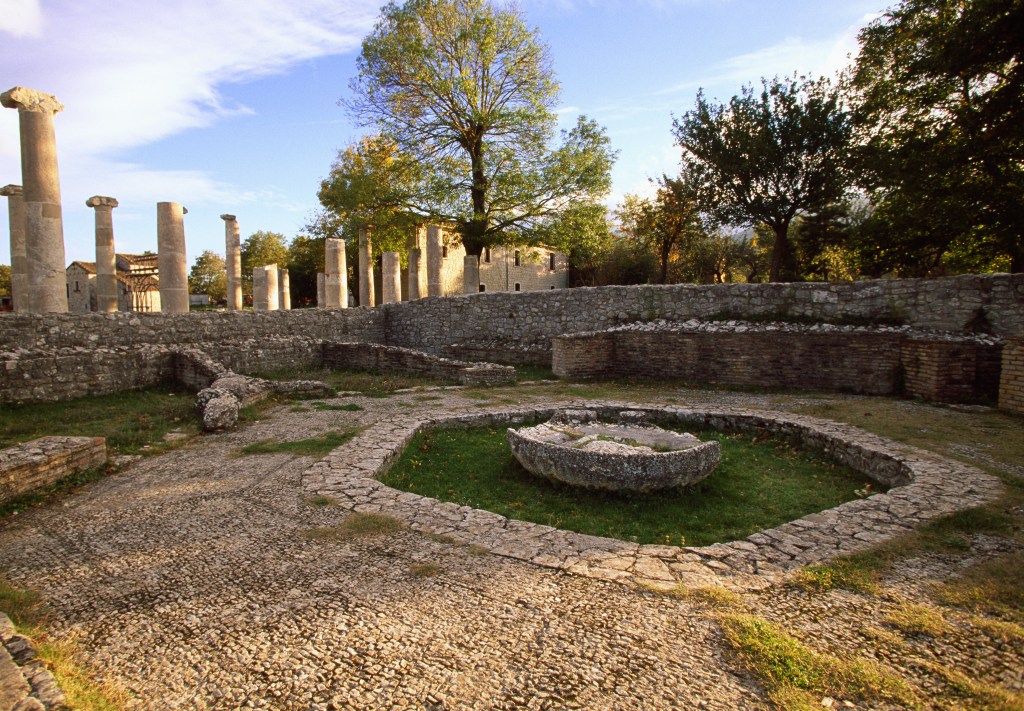
The further south in Italy you wander, the further back in history you go. Similar to Sardinia’s ancient Nuragic culture, Calabria has a history that starts during the Italic tribal rules.
It became a hotspot for Greek thinkers during the height of the Ancient Greek Empire, and was the home of thinkers like Pythagoras and Herodotus. If you like math and history, that’s a pretty big deal.
But Calabria has also been overtaken by the Roman Empire, the Byzantine Empire, and even a Norman invasion that lasted throughout the 11th century. If you’re into that kind of thing, don’t miss out on the National Archeological Museum of the Sibaritide and the Archaeological Park of the Taurians.
